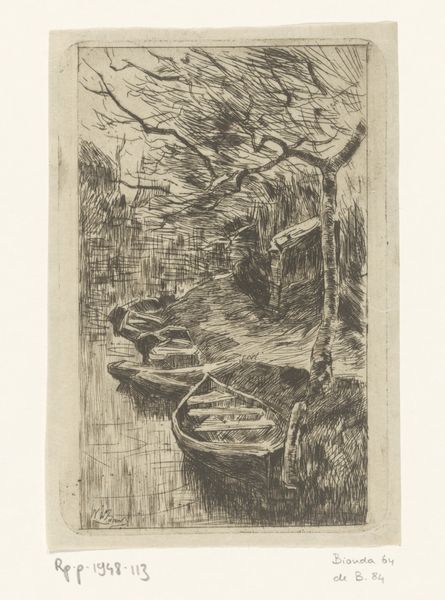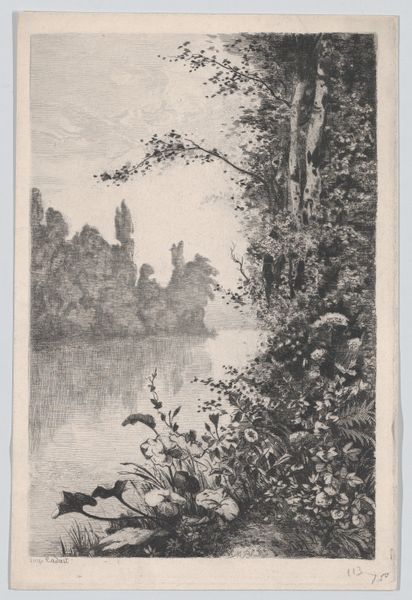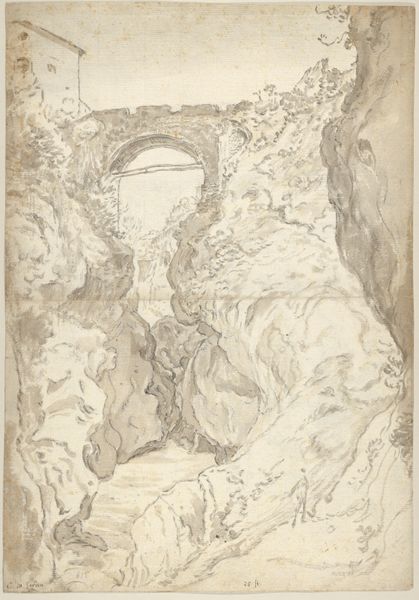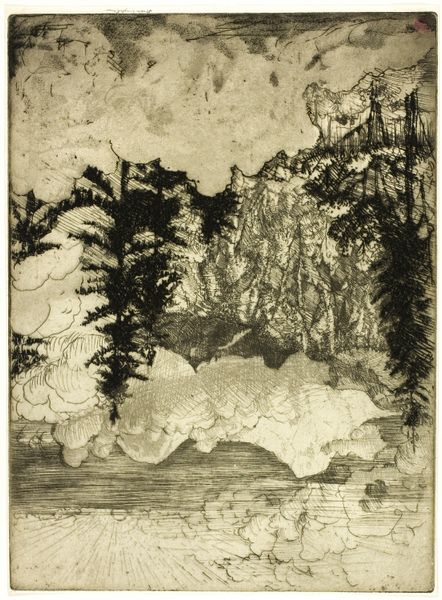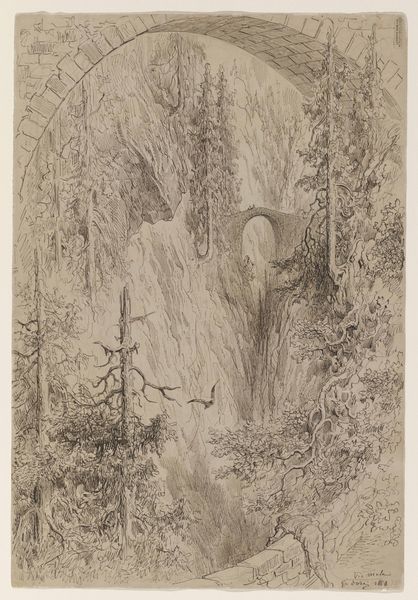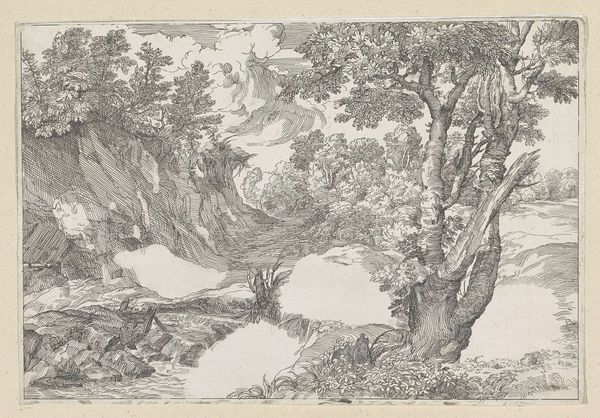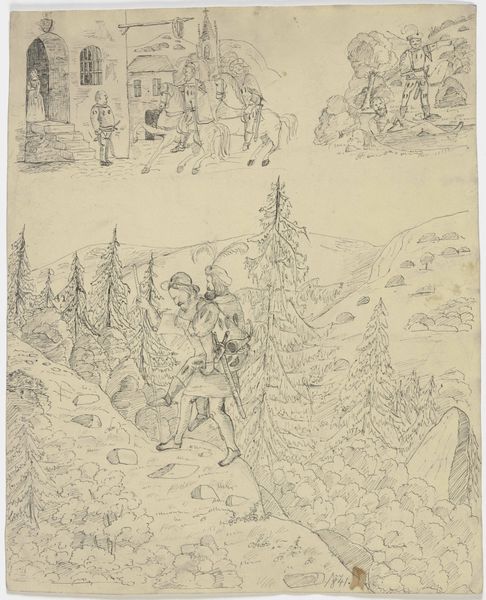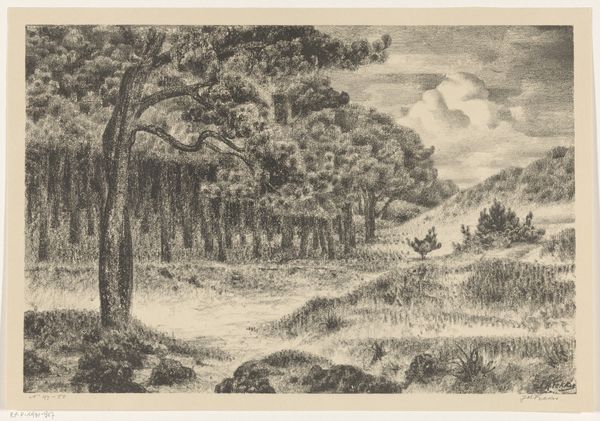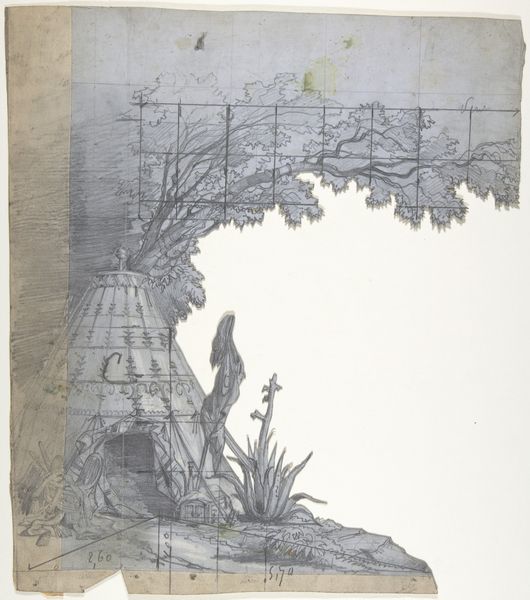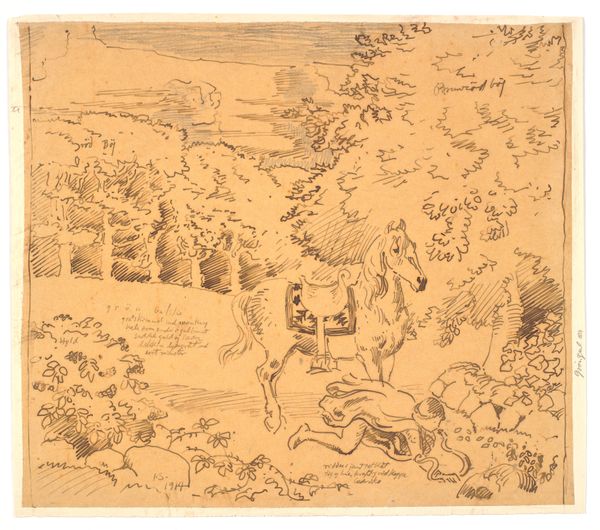
drawing, coloured-pencil, paper, chalk, graphite
#
drawing
#
coloured-pencil
#
impressionism
#
landscape
#
paper
#
coloured pencil
#
chalk
#
graphite
Dimensions: 389 × 318 mm
Copyright: Public Domain
Editor: We’re looking at Henri Rousseau's "Hikers Climbing up to a Mountain Chalet," created around 1888. It's a coloured pencil, graphite, and chalk drawing on paper, currently at the Art Institute of Chicago. It’s quite a busy composition! What stands out to me is its somewhat naive rendering of the landscape; almost like a child's drawing. What do you make of it? Curator: That "naive" quality is exactly what makes it so compelling from a historical perspective. Rousseau, self-taught and working outside academic circles, operated within specific social conditions. Do you see how he simplifies form and compresses space? Editor: Yes, definitely. The perspective feels flattened. It’s all very… literal. Curator: Right. Think about the late 19th century: art institutions valued academic realism. Rousseau’s approach challenged those conventions, indirectly critiquing the dominant ideas of artistic skill. He’s presenting nature, but through his own socialized lens of leisure and the accessibility of the Alps. He probably saw magazine clippings and drawings rather than going there. Editor: So, it's almost a political act just by being… itself? Curator: Precisely. By embracing a self-taught style, he challenged established hierarchies within the art world and brought attention to how artistic value is assigned by institutions. And by picturing leisure he is depicting societal progress, at least for some. What do you make of that now? Editor: That totally shifts how I see the piece. It’s no longer just a quaint drawing; it’s a statement! It kind of makes you question what the intention was for exhibiting or marketing the artwork. Curator: Indeed. His position in art history demonstrates the evolving role of museums in including outsider art and challenges traditional artistic norms. Editor: Wow, I never would have thought of it that way. Thanks!
Comments
No comments
Be the first to comment and join the conversation on the ultimate creative platform.

